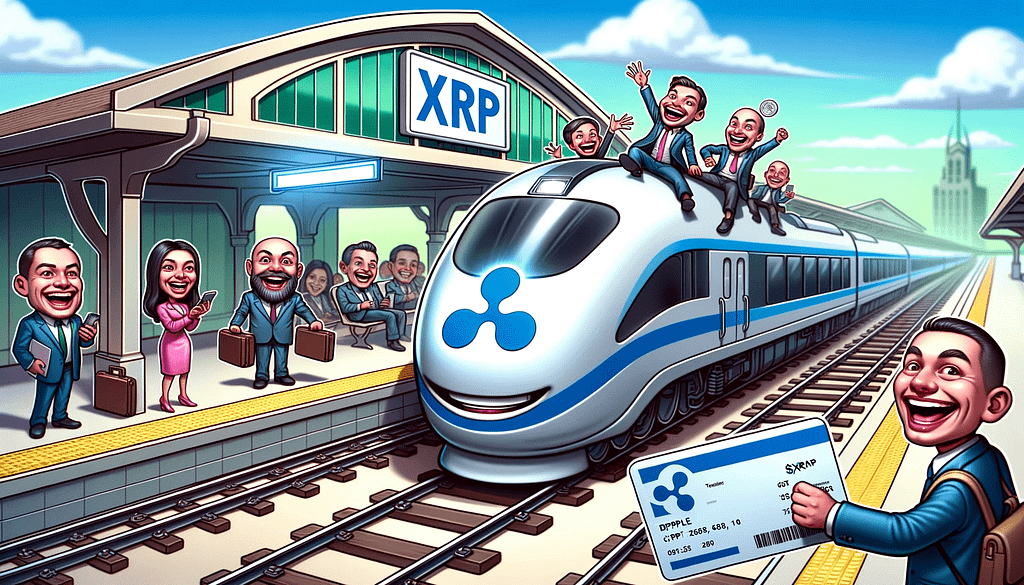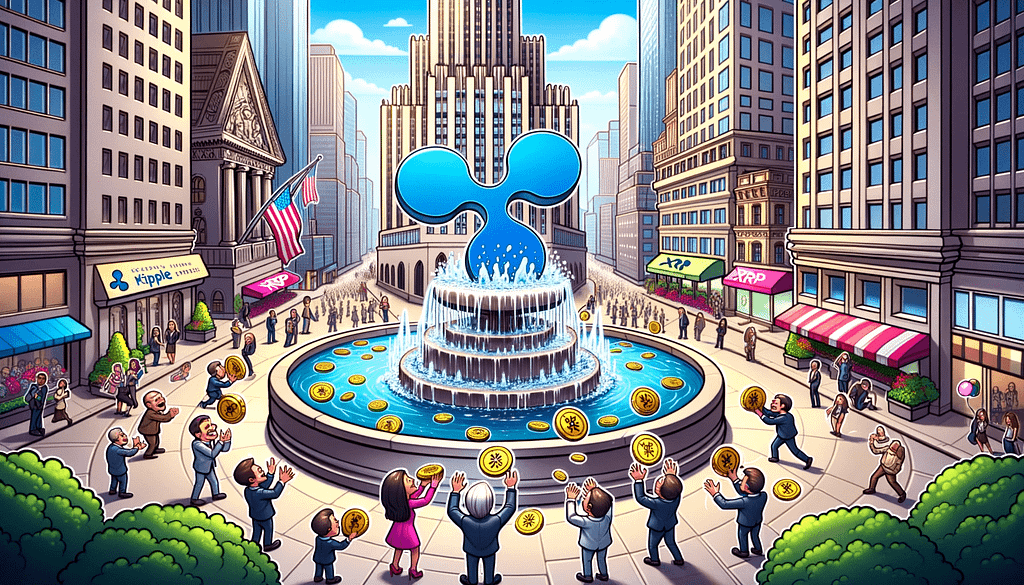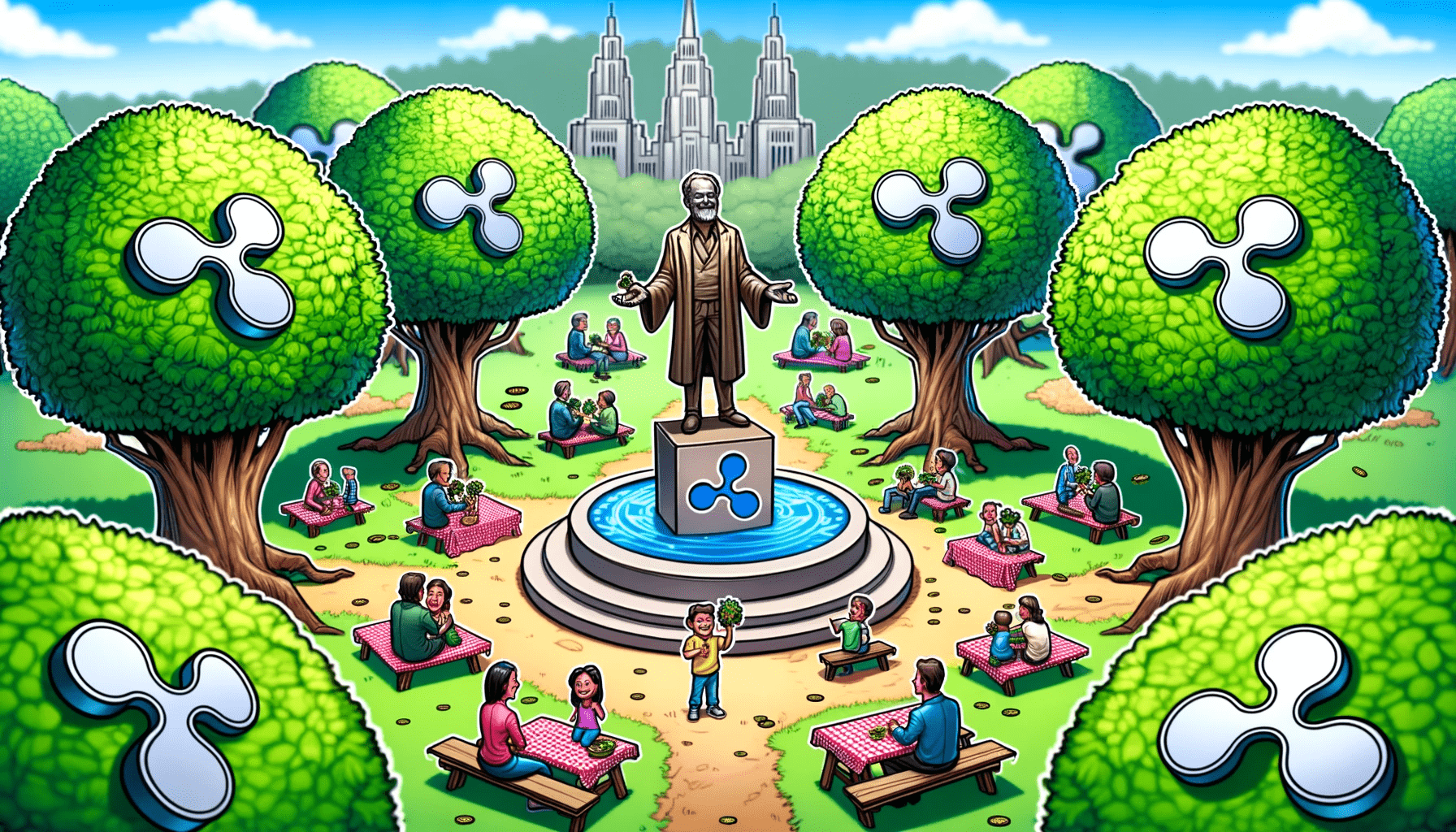When I first began my crypto journey the one question I used to ask myself was; are XRP and Ripple the same, and what the heck is the difference, and why is it so confusing? The distinction between Ripple and XRP is not merely semantic but carries significant implications for those looking to navigate the investment waters of this digital frontier. Let me shed light on the differences between Ripple, the company, and XRP, the digital currency, to equip you with the knowledge you need to make informed decisions. Through a simple breakdown and real-world analogies, we'll unravel the often intertwined identities, paving the way for a clearer understanding of the crypto world. Whether you're a curious onlooker or a budding investor, comprehending the Ripple-XRP dichotomy is a step toward demystifying the cryptosphere.
Ripple: The Company Behind The Curtain
Venturing into the world of digital currencies often feels like stepping into an altogether different universe, filled with perplexing jargon and complex concepts. One such entity that often pops up in cryptocurrency discussions is Ripple. But what exactly is Ripple?
At its core, Ripple Labs Inc., known simply as Ripple, is a technology company founded in 2012, with a vision to enable instant, reliable, and cost-effective money transfers worldwide aims to break down the financial barriers that exist with traditional banking systems, making it easier for money to flow across borders. Imagine a world where sending money across the globe is as easy and cheap as sending a text message; that's the kind of revolution Ripple envisions.
Ripple has created a digital payment protocol that operates as both a platform and a currency. The Ripple platform is an open-source protocol that is designed to allow fast and cheap transactions. Unlike the slow and often expensive transactions in traditional banks, Ripple’s platform aims to make cross-border transactions instant and fee-less. Think of it as a modern-day express courier service, bypassing the slow, outdated postal system represented by traditional banks.
An analogy to simplify this further: Consider Ripple as a new-age financial courier service. In the old days, sending a message overseas would take weeks, if not months. Then came express courier services that drastically reduced this time. Ripple aims to do the same but for money transfers. It's the express courier in a world where traditional banks are the slow postal carriers.
The driving force behind Ripple's efficiency is its payment protocol, which is like a set of rules guiding how money transfers should be done on its platform to ensure they are fast, reliable, and cost-effective. It’s like how courier services have specific guidelines on packaging and addressing to ensure your parcel gets to its destination quickly and securely.
Now, while Ripple is the company orchestrating this financial revolution, XRP is the digital currency that facilitates transactions on Ripple's platform. But more on that in the next section. Understanding the unique role of Ripple is crucial for anyone looking to dive into the crypto ecosystem, as it’s a shining example of how technology can reshape the financial landscape.
XRP: The Digital Token

Transitioning from traditional to digital finance may often feel like learning a new language. However, unraveling this new dialect can become an engaging endeavor with the right guidance. One of the terms that often emerges in crypto discussions is XRP. But what stands behind these three letters?
XRP is a digital currency, or to use a more common term, a cryptocurrency, much like Bitcoin or Ethereum. Created in 2012, XRP operates as the native digital currency on the Ripple payment protocol, enabling money to move seamlessly across borders.
To put it in relatable terms, think of XRP as a foreign currency. When you travel abroad, you often need to exchange your home currency for the currency of the country you're visiting. XRP serves a similar purpose within the Ripple platform, acting as a bridge between different fiat currencies, allowing money to be transferred and settled more efficiently way.
Here’s another analogy: Imagine you’re at a bustling train station, with trains representing different currencies. You want to get from the Dollar train to the Euro train, but they operate on different tracks. XRP acts like a universal track switcher, helping you transition smoothly from one currency to another, minimizing the time and fees typically associated with such transactions in the traditional banking world.
The true beauty of XRP lies in its ability to facilitate real-time, cross-border transactions. In the conventional banking setup, transferring money across borders is a time-consuming and often expensive affair, laden with transaction fees and exchange rate losses. However, with XRP, these transactions are processed in mere seconds at a fraction of the cost. It's like having a super-fast, cost-effective highway in a world where traditional banking methods resemble slow, toll-laden roads.
Furthermore, XRP operates independently of Ripple, the company. This means that even if Ripple Labs Inc. were to vanish tomorrow, XRP and the XRP Ledger would continue to exist. This independence embodies the decentralized nature of blockchain technology, where control is distributed rather than being held by a single entity.
Understanding XRP, its functionality, and its relationship with Ripple is a fundamental step for anyone delving into the crypto universe. It's not merely about decoding a new financial lingo, but about understanding how this digital asset is contributing to reshaping the financial transactions of tomorrow.
How Ripple And XRP Complement Each Other

Creating a Seamless Transaction Highway Ripple's payment protocol is designed to break down the barriers that have traditionally hindered the efficiency of cross-border transactions. However, for this protocol to function seamlessly, it requires a facilitator, a role aptly played by XRP. Imagine a newly built highway (Ripple's protocol) aimed at easing traffic congestion. Now, XRP acts like a vehicle that enables people to take advantage of this highway, ensuring a smooth, fast ride from point A to point B.
Enhancing Cost Efficiency One of the primary objectives of Ripple is to lower the costs associated with cross-border money transfers. XRP is central to achieving this objective. By acting as a bridge between different fiat currencies, XRP minimizes the fees and time involved in currency exchange. It’s like having a universal currency converter that not only provides real-time exchange rates but also facilitates the exchange instantly at minimal costs.
Facilitating Real-Time Settlement The traditional financial system often takes days to settle cross-border transactions, a delay that Ripple aims to eliminate. With XRP, transactions on the Ripple network are settled in real time. Imagine sending a text message to a friend across the globe; it's delivered instantly. Now, Ripple and XRP aim to provide a similar instantaneity to financial transactions, irrespective of geographical boundaries.
Supporting Scalability and Sustainability As the digital financial ecosystem expands, the need for scalable and sustainable solutions becomes paramount. Ripple provides the infrastructure that can handle a high throughput of transactions. XRP, on the other hand, ensures that these transactions are processed efficiently and sustainably. It's akin to a well-structured airport (Ripple) that handles numerous flights daily, with a highly efficient air traffic control system (XRP) ensuring everything runs smoothly.
Building a Future-Ready Financial Ecosystem The collaborative force of Ripple and XRP is not just about addressing the existing inefficiencies in the financial system but also about laying the foundation for a future-ready financial ecosystem. An ecosystem where money moves as freely and quickly as information does today.
Understanding the symbiotic relationship between Ripple and XRP is like decoding the DNA of the modern digital payment realm. It sheds light on how innovative technologies, when intertwined with digital assets, can create solutions that not only address present-day financial challenges but also pave the way for a more inclusive and efficient global financial network.
Investment In A Company Vs. A Digital Asset

When you invest in Ripple, you are essentially buying stakes in a company with a vision, a business model, and a team driving its mission forward. On the other hand, investing in XRP means buying a digital asset with a value that fluctuates based on market dynamics. It's akin to the difference between investing in a gold mining company and buying gold bars. The former is about believing in the company's potential to grow and prosper, while the latter is about owning a piece of a tangible asset.
Regulatory Implications
The legal landscape surrounding cryptocurrencies and blockchain technology is still evolving. Regulatory stances can significantly impact an investor's journey. Ripple, being a company, falls under a different set of regulatory frameworks compared to XRP, a digital currency. For instance, the SEC's failed lawsuit against Ripple Labs is a testament to the different legal considerations investors must consider when venturing into any crypto company. Regulatory compliance is going to be a big thing moving forward, and as of this writing, Ripple's XRP is the only crypto with clear regulatory clarity in the United States along with Bitcoin and Ethereum.
Market Behavior And Analysis
The market behavior of Ripple and XRP can be influenced by different factors. Company performance, partnerships, and overall market trends might affect Ripple’s valuation, while XRP’s price may be swayed by trading volumes, market sentiment, and technological advancements in the Ripple protocol. Being equipped with the knowledge of these differing market dynamics empowers investors to analyze and respond to market changes more effectively.
Risk Assessment
Investing always involves a degree of risk. However, the risk profiles for investing in a company like Ripple and a digital currency like XRP are distinct. Company investments are subject to business performance, management decisions, and broader economic factors. In contrast, digital coins like XRP are known for their price volatility, influenced by a myriad of factors ranging from market sentiment to regulatory news.
Long-Term Vs. Short-Term
Investment Strategies Investors might consider Ripple for long-term investment strategies based on the company's growth potential and the adoption of its payment protocol. Meanwhile, the volatile nature of XRP might appeal to traders looking for short-term investment opportunities to capitalize on price fluctuations.
In conclusion, distinguishing between Ripple and XRP isn't all that hard. Having a clear understanding of how the two complement each other makes both all the more appealing from an investment standpoint.
Matt is the founder of TechMalak. When he's not buried face-deep in the crypto charts you can find him tinkering with the latest tech gadgets and A. I tools. He's a crypto investor and entrepreneur. He uses a mixture of A.I and human thought and input into all his articles on TechMalak, further merging man with machine.





